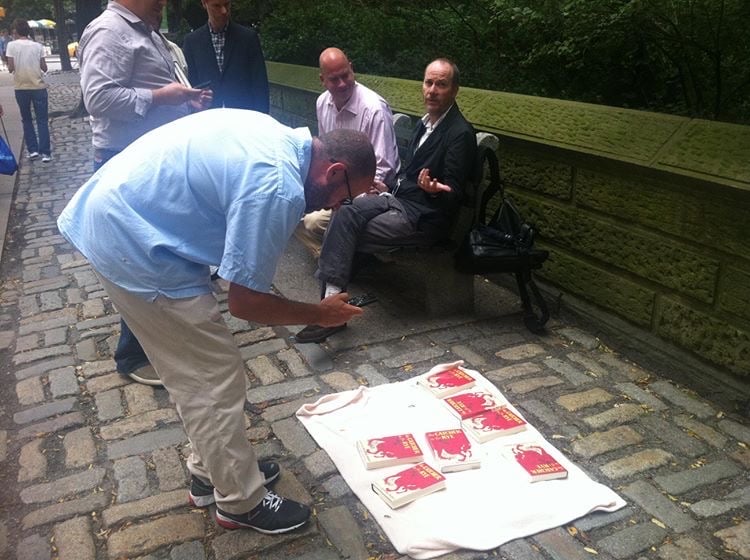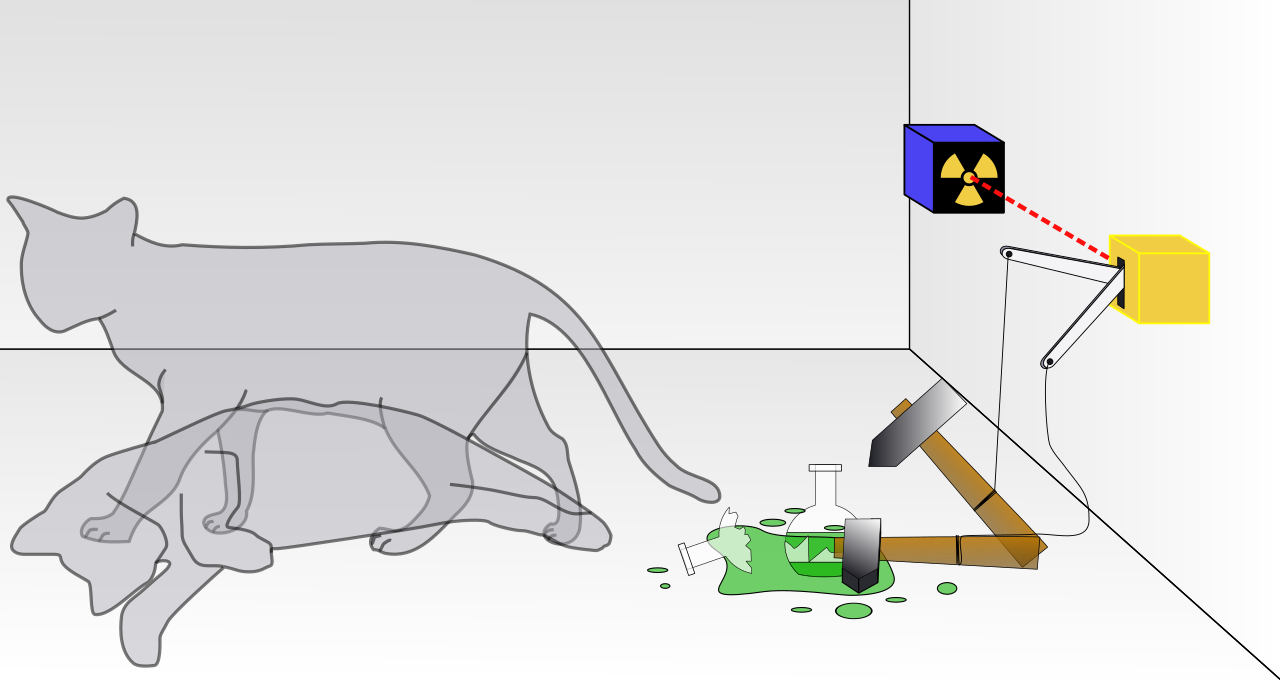Brain Decoder
Army-Funded Algorithm Decodes Brain Signals
The algorithm is part of an effort to eventually establish a machine-brain interface.
By Mila Jasper
But researchers funded by the U.S. Army developed a machine-learning algorithm that can model and decode these signals, according to a Nov. 12 press release. The research, which used standard brain datasets for analysis, was recently published in the journal Nature Neuroscience.
“Our algorithm can, for the first time, dissociate the dynamic patterns in brain signals that relate to specific behaviors and is much better at decoding these behaviors,” Dr. Maryam Shanechi, the engineering professor at the University of Southern California who led the research, said in a statement.
Dr. Hamid Krim, a program manager at the Army Research Office, part of the U.S. Army Combat Capabilities Development Command’s Army Research Laboratory, told Nextgov Shanechi and her team used the algorithm to separate what they call behaviorally relevant brain signals from behaviorally irrelevant brain signals.
“This presents a potential way of reliably measuring, for instance, the mental overload of an individual, of a soldier,” Krim said.
Stupid Asteroid
Dinosaurs would have continued to thrive had it not been for the asteroid, researchers say
By Amy Woodyatt, CNN

Dinosaurs were doing well and could have continued to dominate Planet Earth if they had not been wiped out by an asteroid, new research has found.
After emerging during the Triassic period some 230 million years ago, dinosaurs occupied every continent and were dominant in most terrestrial ecosystems, until they were rendered extinct by the asteroid impact 66 million years ago.
Some scientists believe the creatures were beginning to lose their edge and were already heading for extinction when the asteroid hit Earth at the end of the late Cretaceous period.
But researchers from the UK’s University of Bath are hoping to put this theory to bed. Gathering diverse and up-to-date data, researchers used statistical analysis to assess whether the dinosaurs were still able to produce new species up until their untimely demise.
B.E.E. Serial
Bret Easton Ellis Serializes New High School Serial Killer Story — on His Podcast

For the last six episodes of his podcast, American Psycho author Bret Easton Ellis has held readers rapt with an early 1980s story of Los Angeles high school kids who become entangled with a handsome new student named Robert Mallory — and a serial killer known as The Trawler.
Adding to the intrigue: Ellis says everything in the story really happened to him and his friends.
Ellis, a frequent critique of Hollywood and literary censorship, explained early on that he was releasing the podcast to his paid subscribers in part because he isn’t sure anyone would publish it, given its sometimes horrific contents. He has also wondered if his most successful works – including American Psycho and Less Than Zero — would find publishers today, given the sensitivities of 2020.
The new story, which Ellis has alternately described as a novel and a memoir, is full of details that might migraine the minds of modern-day publishers: a killer who trawls home before his murders (like the Manson family once did), learning their blueprints and stealing pets; underage sex; and ghastly violations involving dead fish. The working title is The Shards.
Ellis is, as he explains on the podcast, completing a new installment every two weeks in time to read it at the start of each B.E.E. Podcast. He has no editor, no notes from a nervous publisher, no corporate board worried about potential fallout. He has changed names and other details, he says, but sometimes friends from Buckley, his Sherman Oaks private school, will contact him after an episode to make minor corrections.
Dupree G.O.D.
Kid Groupie
Our ‘Lost’ Weekend With Van Halen
A couple college dudes won an MTV contest to tour with Van Halen. Then all hell broke loose.
By Chris Lee
On an overcast morning in the spring of 1984, Kurt Jefferis and Tom Winnick, a couple of college-age bros of no particular renown, departed the world of normalcy in a stretch limousine to embark on a rock-and-roll fantasy. Their destination: Detroit. More accurately: oblivion. Jefferis, a 20-year-old department-store stock clerk, had bested more than a million other competitors to win the MTV contest “Lost Weekend With Van Halen.” He and his plus-one, Winnick, a childhood buddy, would in a matter of hours find themselves backstage with the legendarily hard-partying Atomic Punks on a two-day bender that ticked every box of rock debauchery synonymous with the Big Hair era. “You’ll have no idea where you are,” Van Halen’s vainglorious front man, David Lee Roth, said in a promo for the contest. “You’ll have no idea where you’re going and probably no memory of it after you go.”
That turned out to be partially true. As Jefferis and Winnick tell it now, nearly 40 years later, in the weeks following Hall of Fame guitar virtuoso Eddie Van Halen’s death, certain elements from the Weekend remain fixed points in their lives — the private jets, the Champagne and lobster, the cocaine, the onstage chugs of Jack Daniel’s, a woman named Tammy — while other details have been lost to the fog of time. The contest becamesomething of Van Halen folklore in the intervening years; it was the subject of a short film, Lost Weekend, which screened in competition at last year’s Tribeca Film Festival, as well as a dedicated chapter (subtitled “MTV and Van Halen Team Up to Nearly Kill a Super-Fan”) in the 2011 book I Want My MTV: The Uncensored Story of the Music Video Revolution. The events surrounding the contest unfolded just as Van Halen was first ascending the heights of multiplatinum superstardom but only months before Roth would quit the quartet for a solo career. What took place in front of MTV’s cameras served as a primitive precursor to reality television: loosely scripted situational intrigue that wound up far beyond anyone’s control.
The Oracle Returned
Wikipedia, “Jeopardy!,” and the Fate of the Fact
In the Internet age, it can seem as if there’s no reason to remember anything. But information doesn’t always amount to knowledge.
By Louis Menand
Is it still cool to memorize a lot of stuff? Is there even a reason to memorize anything? Having a lot of information in your head was maybe never cool in the sexy-cool sense, more in the geeky-cool or class-brainiac sense. But people respected the ability to rattle off the names of all the state capitals, or to recite the periodic table. It was like the ability to dunk, or to play the piano by ear—something the average person can’t do. It was a harmless show of superiority, and it gave people a kind of species pride.
There is still no artificial substitute for the ability to dunk. It remains a valued and nontransferrable aptitude. But today who needs to know the capital of South Dakota or the atomic number of hafnium (Pierre and 72)? Siri, or whatever chatbot you use, can get you that information in nanoseconds. Remember when, back in the B.D.E. (Before the Digital Era), you’d be sitting around with friends over a bottle of Puligny-Montrachet, and the conversation would turn on the question of when Hegel published “The Phenomenology of Spirit”? Unless you had an encyclopedia for grownups around the house, you’d either have to trek to your local library, whose only copy of the “Phenomenology” was likely to be checked out, or use a primitive version of the “lifeline”—i.e., telephone a Hegel expert. Now you ask your smartphone, which is probably already in your hand. (I just did: 1807. Took less than a second.)
The Largest Astronomy Book In The World
Why the Nasca lines are among Peru’s greatest mysteries
The lines drawn in geometric patterns and distinct animal shapes across the Peruvian desert have inspired many theories over the years. Here’s what we know—and what remains to be seen.
BY JASON GOLOMB
AS A PLANE soars over the high desert of southern Peru, the dull pale sameness of the rocks and sand organize and change form. Distinct white lines gradually evolve from tan and rust-red. Strips of white crisscross a desert so dry that it rains less than an inch every year. The landscape changes as lines take shape to form simple geometric designs: trapezoids, straight lines, rectangles, triangles, and swirls. Some of the swirls and zigzags start to form more distinct shapes: a hummingbird, a spider, a monkey.
These are the renowned Nasca lines—subject of mystery for over 80 years. How were they formed? What purpose could they have served? Were aliens involved?
The lines are found in a region of Peru just over 200 miles southeast of Lima, near the modern town of Nasca. In total, there are over 800 straight lines, 300 geometric figures and 70 animal and plant designs, also called biomorphs. Some of the straight lines run up to 30 miles, while the biomorphs range from 50 to 1200 feet in length (as large as the Empire State Building).
Tower Records Reborn
Iconic Tower Records Returns As Website Selling Vinyl, Cassettes, CDs
By Bruce Haring

One of the most iconic retailers in entertainment has returned in a new incarnation. Tower Records, which closed its stores 14 years ago and declared bankruptcy, today announced it has come back as an online service.
The new Tower Records has online events, the return of its Tower Pulse! magazine, a merchandise section, and, of course, music, music, music, including vinyl and cassette selections in various genres.
Founded in Sacramento in 1960 as a section in a drug store, the chain grew to an international success behind the savvy of the late Russ Solomon, who was memorialized in a 2015 film, All Things Must Pass, which studied the chain’s rise and eventual demise, save for a giant store in Tokyo that retained the name and remains open.
Banksyangelo
Was Michelangelo a Renaissance Banksy?
Scholars consider whether the master was behind a wall carving; ‘Who would ever say it is by my hand?’
By Kelly Crow

Tour guides in Florence, Italy, have long claimed that the small outline of a curly-haired man carved into the stone wall of the city’s town hall, known as the Palazzo Vecchio, was covertly chiseled by Michelangelo.
Some versions of the legend say the Renaissance master caricatured the face of a heckler. Other versions say he documented the face of a stranger headed for execution.
Fiddy Roth Frey
Curtis “50 Cent” Jackson Partners With Eli Roth, 3BlackDot For Three-Pic Deal
By Greg Evans

Producer and recording artist Curtis “50 Cent” Jackson is partnering with Eli Roth and entertainment studio 3BlackDot for a three-picture feature film deal. The deal expands Power player Jackson’s G-Unit Film & Television in the horror film space.
Jackson’s G-Unit will team with the Arts District Entertainment, Roth’s banner with Roger Birnbaum and Michael Besman. The deal, according to G-Unit and 3-BlackDot, involves an “8-figure investment in 50 Cent and G-Unit Film & Television from 3BlackDot.” The latter will act as financier and studio across all the films.
The three entities will collaborate on each film, while utilizing 3Blackdot’s in-house resources in gaming, publishing, and merchandise to build out entertainment properties. A statement announcing the deal says the film IP will be leveraged using Jackson, Roth and 3Blackdot “to platform into a 360-degree experience across video games, publishing and merchandise.”
Great Tits Gone
Great tits could be wiped out by climate change in near future
By Ben Cost

We mean the birds, dirtbags.
The unfortunately named great tit has joined a long list of species that could soon disappear due to Earth’s rapidly warming climate.
“If the changes happen too fast, species can become extinct,” said Emily Simmonds, an associate professor at the Norwegian University of Science and Technology’s department of biology. She authored an article in the journal Ecology Letters detailing how the food supply of the great tit — a colorful songbird endemic to Europe and Asia — and other bird species can be impacted by a premature season shift caused by rising temperatures.
Simmonds argued that warmer winters and resultant early springs prompt plants to leaf earlier, causing tree-eating larvae to hatch ahead of time, Science Daily reported. This can prove problematic to birds like the great tit that depend on the spring bug bounty when they’re babies.
All Gold Stars
Does all the gold in the universe come from stars?
Humanity’s fascination with this precious metal is increased by knowing it comes from the stars.

In a remote galaxy, two neutron stars circled one another in a ballet of ultimate destruction and inevitable creation. Both objects were the remnants of massive stars, probably from a binary system, that had become supernovae long before. Each was incredibly massive, with neutrons so closely packed that their cores became diamond. The dance, alas, could not go on forever and the stars collided, releasing unimaginable energy and sending gravitational waves speeding through the fabric of space-time.
In 2017, 1.3 billion years later, astronomers detected those waves with the Laser Interferometer Gravitational-wave Observatory. Albert Einstein’s prediction that the universe should be filled with such faint ripples caused by gravity from massive objects included sources such as neutron star mergers. Yet finding a disturbance in the fabric of space-time from this kind of event had proven elusive until then. When news of the detection of gravitational waves broke, the media wanted to know what else happens when neutron stars collide. Astronomers explained that, beyond the destruction of the stars and the ripples in space, such events also create all the heavy elements we know in the blink of an eye. But what did the media key into? That gold comes from outer space.
That’s great – thanks.
The Next Decade Could Be Even Worse
A historian believes he has discovered iron laws that predict the rise and fall of societies. He has bad news.
Story by Graeme Wood
Peter Turchin, one of the world’s experts on pine beetles and possibly also on human beings, met me reluctantly this summer on the campus of the University of Connecticut at Storrs, where he teaches. Like many people during the pandemic, he preferred to limit his human contact. He also doubted whether human contact would have much value anyway, when his mathematical models could already tell me everything I needed to know.
But he had to leave his office sometime. (“One way you know I am Russian is that I cannot think sitting down,” he told me. “I have to go for a walk.”) Neither of us had seen much of anyone since the pandemic had closed the country several months before. The campus was quiet. “A week ago, it was even more like a neutron bomb hit,” Turchin said. Animals were timidly reclaiming the campus, he said: squirrels, woodchucks, deer, even an occasional red-tailed hawk. During our walk, groundskeepers and a few kids on skateboards were the only other representatives of the human population in sight.
The year 2020 has been kind to Turchin, for many of the same reasons it has been hell for the rest of us. Cities on fire, elected leaders endorsing violence, homicides surging—to a normal American, these are apocalyptic signs. To Turchin, they indicate that his models, which incorporate thousands of years of data about human history, are working. (“Not all of human history,” he corrected me once. “Just the last 10,000 years.”) He has been warning for a decade that a few key social and political trends portend an “age of discord,” civil unrest and carnage worse than most Americans have experienced. In 2010, he predicted that the unrest would get serious around 2020, and that it wouldn’t let up until those social and political trends reversed. Havoc at the level of the late 1960s and early ’70s is the best-case scenario; all-out civil war is the worst.
Alex Trebek Gone
Legendary ‘Jeopardy!’ host Alex Trebek dead at 80
By Justin Doom and Troy McMullen

Alex Trebek, the quick-witted and debonair television host who won over generations of fans at the helm of the popular quiz show “Jeopardy!,” has died after a lengthy battle with pancreatic cancer. He was 80.
“This is an enormous loss for the JEOPARDY! staff, crew and all of Alex’s millions of fans. He was a legend of the industry that we were all lucky to watch night after night for 37 years,” Mike Richards, the show’s executive producer, said in a statement. “Working beside him for the past year and a half as he heroically continued to host JEOPARDY! was an incredible honor. His belief in the importance of the show and his willingness to push himself to perform at the highest level was the most inspiring demonstration of courage I have ever seen. His constant desire to learn, his kindness, and his professionalism will be with all of us forever.”
Telegenic and handsome, the beloved Trebek first became familiar to American audiences as host of more than a dozen daytime game shows stretching back to 1966, including “High Rollers,” “Double Dare” and “The $128,000 Question.”
But it was “Jeopardy!” — a unique quiz show that challenged contestants on topics from history to literature to pop culture — that made Trebek a pop culture icon. Over his three decades with the show, he has hosted nearly 8,200 episodes — a Guinness World Record.
Fulton Ryder Redux
Wet Paint: Richard Prince to Reopen His Secret Gallery, the Shocking Story Behind the Odeon’s Missing French Fries, & More Juicy Art-World Gossip
Which hot new artist did Anderson Cooper visit in the studio? Which Hamptons gallery is opening a space in Chelsea? Read on for answers.
by Nate Freeman

SLIGHT REBELLION OFF MADISON
In 2014, Richard Prince closed Fulton Ryder, the mysterious bookstore-slash-gallery that he clandestinely ran out of a space at a never-repeated address—though, reader, if you can keep a secret, it was on East 78 Street between Park and Madison. Fulton Ryder (which is a name that Richard Prince has used as a pseudonym) had a pretty solid two-year run, selling the now-infamous edition of J.D. Salinger‘s The Catcher in the Rye that read, on the cover, “a novel by Richard Prince.” It also hosted the debut solo show of current market star Genieve Figgis, whom Prince discovered on Instagram, and published books by artists such as Dan Colen, Marilyn Minter, John Dogg, and Howard Johnson (the latter two names are, again, pseudonyms of Richard Prince).
And so it was a bit of a surprise to see Prince, the great American artist, getting back into the book publishing business this year. In May, during the peak of lockdown, Prince sat down on a bench near Central Park—the same bench, in fact, where he first sold copies of his cover-sleeve remix of the Salinger classic—and offered his edition of Truth Vs. Lies, a book penned by the Unabomber, Ted Kaczynski. Turns out Prince purchased the one and only proof of the math-professor-turned-domestic-terrorist’s manuscript in 2014.
Jessica Esquivel Rocks
What a Real Superhero Looks Like
Particle physicist Jessica Esquivel on diversity, perseverance, and the search for a new understanding of our universe.
By Mary Ellen Hannibal

The physics of superheroes is more than a fun exercise in the world of Jessica Esquivel. A particle physicist in the Muon Department of Fermi National Accelerator Laboratory, Esquivel works at what she calls “the bleeding edge” of the known universe. In the world of physics, Esquivel is frequently the “only.” The only woman, the only Mexican, the only black person, and the only lesbian.
Recently she brought her experience to Wakandacon, the comic book conference based on the African-centric world of Black Panther. Making her own costume, Esquivel cosplayed as Shuri, the technological genius who designs weaponry for her brother, Black Panther. Esquivel also organized a panel of black scientists and was on hand to answer questions at Fermilab’s booth at the conference. To many women of color interested in the hard sciences, Esquivel herself is a superhero.
You knew you wanted to be an astrophysicist from a young age. How did you get the idea?
My aunt babysat for me when I was really young and we watched a lot of sci-fi shows on television. One featured an astronaut in space fighting aliens while an astrophysicist back at NASA directed him to press this or that button, go right, go left—it was very dramatic. I thought the astrophysicist was the actual hero in the story, so I walked around saying I was going to be one. I grew up in Texas, and when I was about 12 my family took me to NASA in Houston. They sprang for the VIP tour, but I was bored! There was no astronaut floating in space on the screen, and everyone was typing on their keyboards and drinking coffee.
On that same trip we saw astronauts and a space shuttle in a big pool, simulating the absence of gravity in space. The scientists working on this were engineers, so I changed my ambition and said, “okay, I’ll be an engineer and work on that.”
Old School Audiophiles Return
This weekend, why not build a stereo from scratch?
The old-fashioned appeal of audio kits never goes away – especially during a pandemic.
Brad Breedlove never considered himself an audiophile. The project manager for an Indianapolis-area industrial piping company has been collecting vinyl for about five years, and the records in frequent rotation on his midrange Audio-Technica turntable include the well-worn now-classics that belonged to his parents when he was growing up.
It’s a good stereo system – but not obsessively so – that includes SVS Ultra Bookshelf speakers and an SVS SB 4000 subwoofer powered by a Schiit Vidar amp.
In September, however, Breedlove took a step into the deeper waters of the sonically serious and ordered a US$369 Reduction 1.1 phono preamplifier from Bottlehead, an audio kit maker in Washington state.
When it arrived, the box contained slabs of unfinished alder wood, carefully packed circuit boards, vacuum tubes, and bags full of capacitors and resistors.
Before he could turn on his preamp, he would have to put it together.
In the golden age of hi-fi in the 1950s and ’60s, building your own stereo equipment was almost as common as buying it.
Entire magazines dedicated to the craft were full of black-and-white halftone depictions of Brylcreemed dads hunched over disemboweled sound systems from companies such as Heathkit and Dynaco, soldering irons in hand.
These days, it’s often the warm glow of vacuum tubes on Instagram – and a surfeit of time – that draws in people.
Dark Soul Good
Into the night: why walking in the dark is good for the soul

The lights from the cottage windows recede, all too rapidly, as we walk along an unlit country lane and take a footpath through a field into open countryside. Thick cloud cover prevents the moonlight from illuminating the way ahead. Yet, as my eyes begin to get used to the darkness, the landscape around me reveals itself in a new light – albeit a shady one.
The contours of Mount Caburn, an iron-age hill fort, are like shadows against the sky. On the horizon, a tree bent by the wind is silhouetted, and the rocky outcrop at the top of the field turns out to be a flock of sleeping sheep. A fox cries, a pheasant crows and the air is full of a heady earthy scent.
Dead Not Dead
Could Schrödinger’s Cat Exist in Real Life?

Have you ever been in more than one place at the same time? If you’re much bigger than an atom, the answer will be no.
But atoms and particles are governed by the rules of quantum mechanics, in which several different possible situations can coexist at once.
Quantum systems are ruled by what’s called a “wave function”: a mathematical object that describes the probabilities of these different possible situations.
And these different possibilities can coexist in the wave function as what is called a “superposition” of different states. For example, a particle existing in several different places at once is what we call “spatial superposition”.
It’s only when a measurement is carried out that the wave function “collapses” and the system ends up in one definite state.
Generally, quantum mechanics applies to the tiny world of atoms and particles. The jury is still out on what it means for large-scale objects.
In our research, published today in Optica, we propose an experiment that may resolve this thorny question once and for all.
Sarcophagi Conspiracy
Is a Conspiracy Theory Behind the Mass Vandalism of Art in Berlin?
By Helen Holmes

When people vandalize art in museums, they usually do it either for deeply personal or backwards reasons, or it was an accident. Neither of these options seem to sufficiently explain a bizarre instance of vandalism in Berlin that took place earlier this month, but which was only just now revealed to the press. According to the German media, over 70 artworks in the Pergamon Museum, the Alte Nationalgalerie and the Neues Museum on Berlin’s museum island were smeared with a mysterious oily substance on October 3. Among the items damaged are Egyptian sarcophagi, 19th-century paintings and stone statues scattered throughout the three museums.
At the present moment, there are reportedly no concrete leads on who might have committed the crime, and no definitive evidence left behind pointing authorities to a particular motive. “This is a variety of objects that do not have any immediate connection in terms of context,” Carsten Pfohl, the head of Berlin Police’s Art Crime Unit, told NPR news. “We have no self-incriminating letter or anything like that, so we have to assume for now that the motive is completely unclear.” However, upon breaking the news, members of the German media were quick to connect the oily vandalism to certain conspiracy theorists who might have influenced the crime in some way.
Jet-pack Man
Another ‘man in jet pack’ seen above LAX as China Airlines crew ‘spots mysterious flier at 6,000ft’ and FAA alerts cops
by Neal Baker / Fionnuala O’Leary
ANOTHER apparent sighting of a man in a jet pack flying above Los Angeles International Airport was made on Wednesday – with a China Airlines crew reporting seeing the mystery flier at 6,000ft.
The Federal Aviation Administration has alerted law enforcement and is investigating the report, which is the second such sighting in weeks.
An FAA spokesman told The Sun: “A China Airlines crew reported seeing what appeared to be someone in a jet pack at an approximate altitude of 6,000 feet, about seven miles northwest of Los Angeles International Airport around 1:45 pm [on] Wednesday.
“The FAA alerted local law enforcement and will look into the report.”
United States of A-holes
The new documentary “Assholes: A Theory” examines the assholing of America, a nation ruled by the biggest asshole of them all: Donald J. Trump.
by Nick Schager
As U.S. Marshal Raylan Givens (Timothy Olyphant) famously opined on Justified, “You run into an asshole in the morning, you ran into an asshole. You run into assholes all day, you’re the asshole.” Yet in a 2020 America on the precipice of a monumental presidential election, it seems that assholes are not only everywhere you turn—in newspapers, on cable TV, at political rallies and protests, and all over social media—but that they, and their behavior, has been normalized. It’s this “rising tide of assholery” that’s the focus of director John Walker’s Assholes: A Theory, which adapts philosophy professor Aaron James’ 2012 non-fiction book into a documentary aimed at both precisely defining the term “asshole,” and investigating how those who fit that bill have increasingly come to dominate key spheres of modern public life.
Donald Trump isn’t seen or mentioned once by name in Assholes: A Theory. Nonetheless, his specter looms large over Walker’s film (in theaters Oct. 30, and on VOD Nov. 6), whether during conversations about corrupt Italian Prime Minister Silvio Berlusconi—the forerunner of the media-manipulating populist-criminal-strongman trend that’s recently swept through Western nations—or passages discussing Facebook, Twitter and Google’s prioritization of profit over their responsibility to safeguard democracy from hate speech and disinformation. Without once bringing him up, Walker makes clear that Trump is the embodiment of this problem, given that his election to the highest office—and subsequent flouting of rules and standards of common decency—has made it appear acceptable, and in fact rewarding, to act in the worst possible manner as a means of achieving one’s selfish ends. He is, the film silently contends, the apex of American assholery.
Go Schmidt!
Former Google CEO Calls Social Networks ‘Amplifiers for Idiots’
by Gerrit De Vynck

(Bloomberg) — Former Google Chief Executive Officer Eric Schmidt said the “excesses” of social media are likely to result in greater regulation of internet platforms in the coming years.
Schmidt, who left the board of Google’s parent Alphabet Inc. in 2019 but is still one of its largest shareholders, said the antitrust lawsuit the U.S. government filed against the company on Tuesday was misplaced, but that more regulation may be in order for social networks in general.
“The context of social networks serving as amplifiers for idiots and crazy people is not what we intended,” Schmidt said at a virtual conference hosted by the Wall Street Journal on Wednesday. “Unless the industry gets its act together in a really clever way, there will be regulation.”
Does The Dog Die
A Website Called “Does The Dog Die” Is For Anyone Who Hates Sad Dog Movies

Any death in a movie, book, or TV show is upsetting and can be very disturbing. The Lion King? My sobs are unstoppable. I don’t even watch Game of Thrones — don’t @ me — but I know all about the Red Wedding and felt how emotionally distraught you all were. So, in case you want to avoid surprise human and animal deaths that would warrant approximately five tissue boxes, and who has the space in their purse for that, there’s a website for that. This website lets you know if the dog dies at the end of the movie, and honestly thank you.
Alfa’s @ Sotheby’s
Sotheby’s Two Evening Sales Bag a Muted $283.9 Million, Fueled by the Scene-Stealing Inclusion of Three Futuristic Alfa Romeos

Before the sales even began, a shocking announcement turned the entire evening into an extended anti-climax. At the last minute, the Baltimore Museum of Art pulled works it had consigned by Clyfford Still and Brice Marden after donors threatened to withhold millions of dollars in horror and more than a dozen institutional bigwigs signed letters decrying the sell-off.
It was a shocking about-face from BMA director Christopher Bedford, a singular figure in the ranks of American museums who is steadfastly committed to the idea that deaccessioning old works from a homogeneous collection is the most efficient way to fill its holdings with new work by young artists of color. In an interview with the Baltimore Sun this week, Bedford accused anyone against his brash approach of making an “investment in a system of operating institutions that is very deeply centered in white power and white privilege.”
Weeks after Christie’s made a splash by selling a T. Rex for $31.8 million in its postwar and contemporary art sale, Sotheby’s embraced the stunt of slotting non-art objects into its auction. The big lot of this portion of the night was not an artwork (or a dinosaur), but a trio of automobiles: three futuristic unique Alfa Romeos, which sold as a group for a hammer price of $13.25 million, short of the $14 million low estimate. With fees, the price was $15.5 million, and it was purchased for a client by Barney Ruprecht, the RM Sotheby’s senior specialist. (His father, Bill Ruprecht, was CEO of the auction house until 2014.)
Asteroid Grab
Watch Live: A NASA Spacecraft Is About to Land on an Asteroid And Grab a Sample
by ELIZABETH CANTWELL
Imagine parallel parking a 15-passenger van into just two to three parking spaces surrounded by two-story boulders. On October 20, a University of Arizona-led NASA mission 16 years in the making will attempt the astronomical equivalent more than 200 million miles (320 million kilometres) away.
A NASA mission called OSIRIS-REx will soon attempt to touch the surface of an asteroid and collect loose rubble.
Brilliant Legal Hack
from the New Hampshire Union Leader
Woman accused of impersonating prosecutor, dropping criminal charges against herself

A Littleton woman allegedly impersonated a Hillsborough County prosecutor when she filed bogus documents with court officials declaring that the drug possession and stalking case against her had been dropped, according to recently released indictments.
Lisa Landon, 33, of Railroad Street, Littleton, faces one charge of false personation and six charges of falsifying physical evidence, according to Hillsborough County grand jury indictments handed up earlier this month.
The indictments allege that Landon submitted the fake documents in three different court cases last November and December. In several instances, she used the New Hampshire court system’s electronic system to file documents.
The Amazing Randi Gone
James Randi Dies: ‘The Amazing Randi’ Performer And Paranormal Skeptic Was 92
By Bruce Haring
James Randi, a magician whose many TV appearances led him to a second career as a respected paranormal investigator, has died at 92. The James Randi Foundation confirmed his death in a tweet on Tuesday, saying he died of “age-related causes.”
Born Randall James Zwinge in 1928, he entered show business as a teenager, touring with a carnival and working nightclubs in his native Toronto, Canada. Initially billed as The Great Randall: Telepath, he parlayed that name into a mind-reading act and a knack for predicting the future.
Unlike many magicians and performers, Randi was not averse to letting fans know that he was a trickster, relying on subterfuge and sleight of hand to pull off his tricks. As his career grew, adding escape artist to his bag of stunts, he grew increasingly worried about the people who refused to embrace the fact that it was all an act.
Elysium Realism
The Elysium effect: The coming backlash to the billionaire ‘NewSpace’ revolution
In the 2013 science fiction film “Elysium” starring Matt Damon, Earth’s wealthiest 0.01% move to the ultimate gated community, a luxurious orbiting space colony, leaving a poverty-stricken humanity to fend for themselves on a ravaged planet.
Interestingly, it is indeed some of today’s 0.1% who are leading the way into space to build communities beyond Earth. However, quite the opposite of the movie, their goals are of the highest order, from democratizing access to space by lowering costs, to creating new products and ideas, to helping save the planet and opening space to future generations.
As in any good social movement, there is a need for bad guys, and these guys are easy icons of evil to many. And there may be no easier target they could present than a shiny private rocketship or space station — even if it is for a good cause.
Though they have many flaws, including the accumulation of lots of money, these space pioneers are actually trying to do something good for humanity and the planet. And while they may not be the cuddliest of people, just look at their other projects and goals: Musk builds electric cars and solar power systems, Bezos wants to move polluting heavy industry off planet – even as Amazon pushes towards zero emissions, and Branson is a long time champion of social and environmental causes.
Yet these visionaries, who author Christian Davenport called “The Space Barons” are often portrayed as rich boys with fancy toys.
Things will get worse when the next wave of terribly branded “space tourists” begin to fly. Bezos’ Blue Origin and Branson’s Virgin Galactic will charge over $200,000 for excursions to the edge of space, while newcomer Axiom Space Systems and SpaceX will offer flights to and beyond the International Space Station for a few tens of millions, and even loop the Moon for a just few hundred million more.
Cannonball Renaissance
The Incredible Story of the Great Cannonball Boom
When the country shut down and the highways thinned out, a stealthy group of amateur car obsessives glimpsed an opportunity to revive the fabled cannonball run—the highly daring, absurdly illegal cross-country endurance race. And in the record-breaking frenzy that followed, they became legends of the unlikeliest pastime of the pandemic age.
BY ALEX W. PALMER
PHOTOGRAPHY BY PELLE CASS

Fred Ashmore was just outside Needles, California, in the parched low desert where the jagged southern point of Nevada meets the Arizona-California border, when he felt it wash over him. A kind of confusion melting into panic. He was exhausted, which he knew was making everything worse. It was about 1 a.m., and he’d been at the wheel for almost 24 hours now, rocketing west at speeds well over 100 miles per hour. For lucky stretches, when the road opened up and Ashmore punched the throttle, he could get his silver Ford Mustang GT up to 159 mph—the car’s top speed, he’d discovered. Now, ahead of him in the inky-black night, he could see the flash of brake lights, a river of travelers funneling into a slow-moving line.
Before long, Ashmore was inching along the desert highway, feeling crucial minutes tick by and craning to see what was ahead. That’s when he noticed trunks popping open and a new fear took hold. Officials from the California Department of Food and Agriculture were searching vehicles entering the state. He watched a car in front of him stop and then get looked over from top to bottom. If they do that to my car, Ashmore thought, I’m probably not getting it back.
On the outside, his Mustang looked pretty much like any other car on the road. Inside was another story. Splayed across Ashmore’s dashboard was an array of devices, including a CB radio, a mounted tablet operating Waze and Google Maps, and an iPhone running a timer. Stuck to the inside of the windshield was a radar detector; on the front grille and back bumper were the sensors for a laser jammer. Even more conspicuously, strapped beside and behind Ashmore, where the front and rear passenger seats should have been, huge fuel tanks sloshed with gasoline. A series of hoses connected them—along with another enormous tank, this one in the trunk—to the car’s main fuel tank. An officer inspecting Ashmore’s rig could have been forgiven for concluding that he was driving a giant gasoline bomb.
